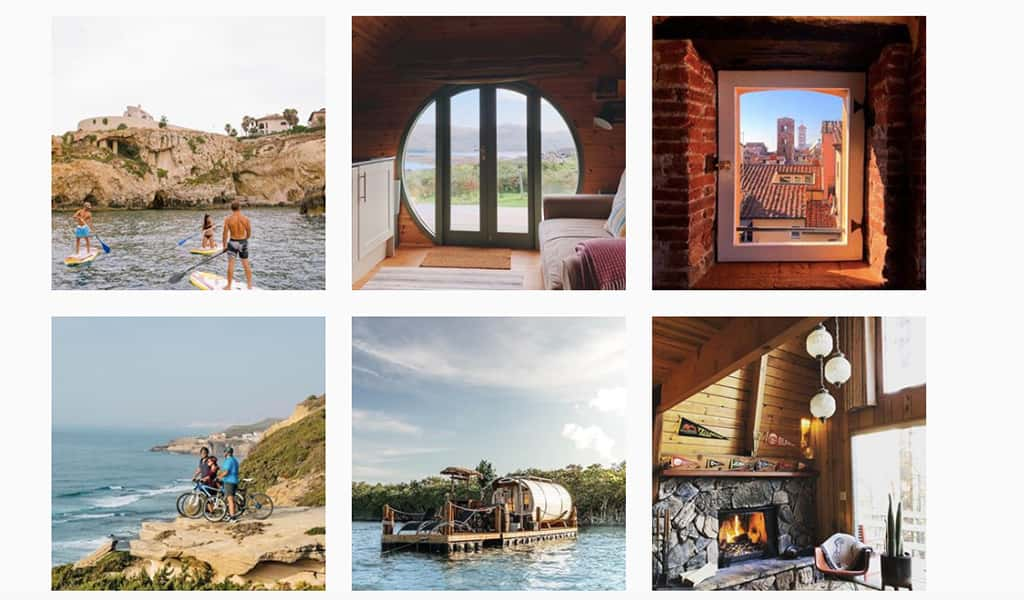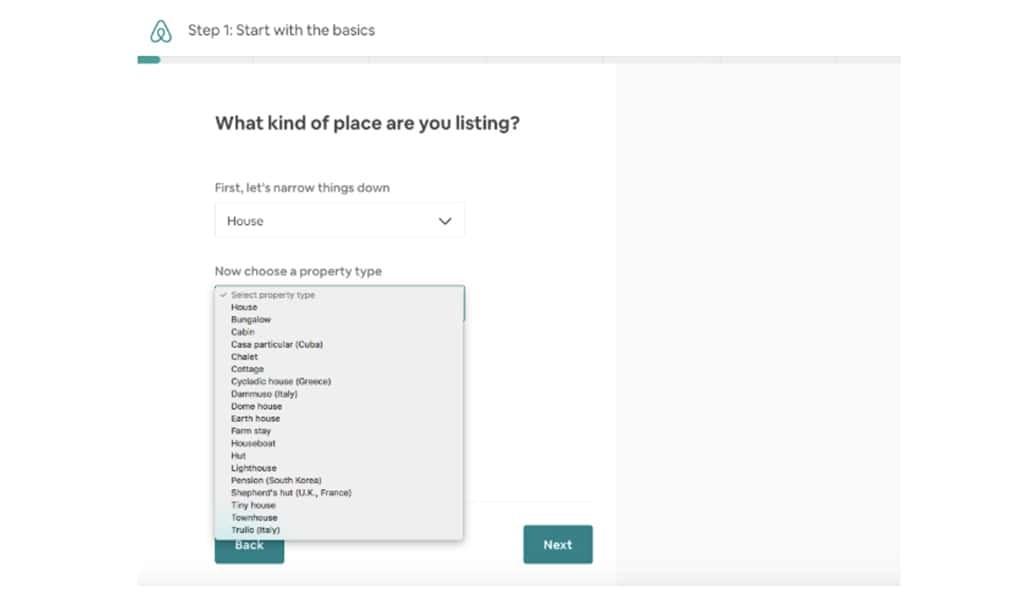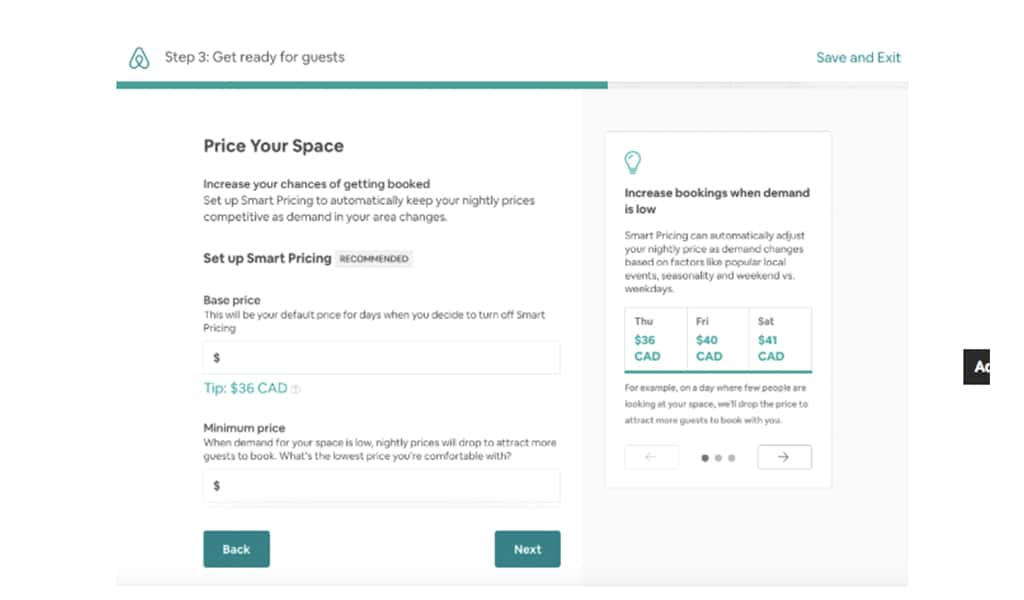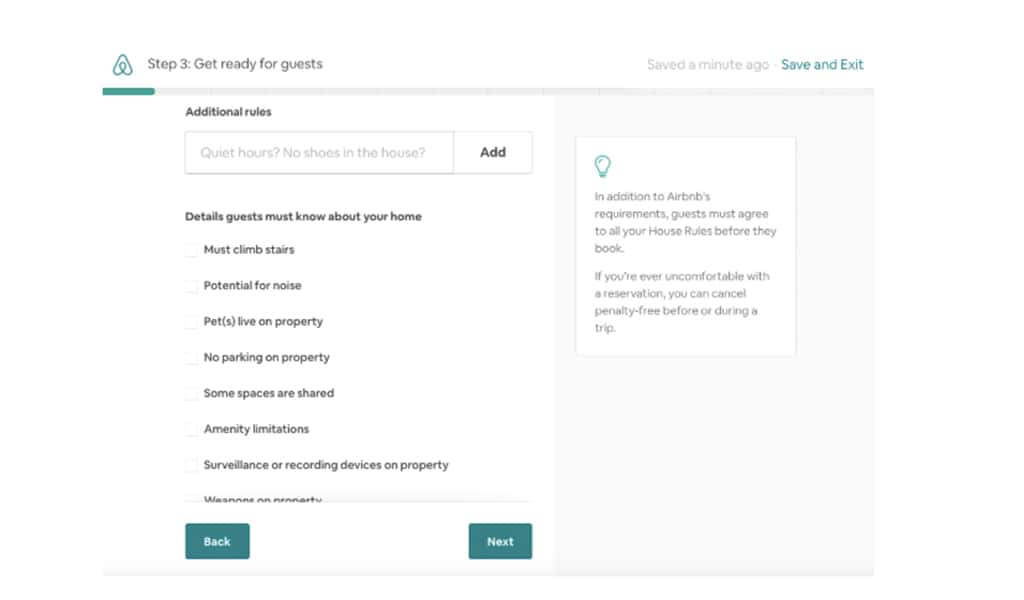Survey Results
Valentines Day traditions and gifts
With Valentine’s Day around the corner, we’re in a romantic mood here at Caddle. We’ve been wondering what Canadians are up to on the big day, how they spend time and money with their partner, and whether they had plans to celebrate this day of love.
Valentine’s Day traditions
When it came time to decide how to spend Valentine’s Day 2019, responses were split in a recent Caddle survey; while 25% looked forward to buying presents for their significant other, 21% said they and their honey don’t celebrate Valentine’s Day. Treating their significant other to an experience and being unsure if they will celebrate were tied for third at 19%, while not celebrating at all trailed in fourth place at 15%.
Who is Saint Valentine?
St. Valentine is the patron saint of lovers, epileptics, and beekeepers. By some accounts, he suffered martyrdom during the persecutions of Christians by emperor Claudius II Gothicus circa 270. According to legend, he had signed a letter “from your Valentine” to his jailer’s daughter (who became a friend) and healed her from blindness. Another common legend states that he defied the emperor’s orders and secretly married couples to spare the husbands from war. – Source: Britannica.com

Valentine’s Day gifts
Asked what they think the best way to celebrate Valentine’s Day is, respondents know what they like. Spending time with their significant other was the clear winner at 49%, while “doing something special/being treated to an experience” trailed in a distant second at 22%. Not celebrating Valentine’s Day (10%), “a simple card is good enough for me” (7%), “being showered with gifts” (5%), “gifts, cards, and a special experience” and “Other” ( tied at 3%) rounded out the answers.

How much to spend on Valentine’s Day?
Once you’ve chosen how you’d like to spend your time and money making memories with the one you love, you’ve got to decide how much to spend. Respondents to this survey are conservative spenders when it comes to Valentine’s Day, with 36% saying one person should spend less than $20. Spending in the $21 to $50 range fell closely behind at 35%, while 16% came in a distant third with a range of $51 to $100. Eight percent fell into the “Other” category, while 5% said $101 to $200, and 1% would go all out at $201 to $500. No respondents said they would spend more than $500.

Gifts infused with meaning always win hearts, and our respondents were no different; 29% said the best Valentine’s Day gifts are “something that means something to me”, while 21% would like to be surprised with something they want but probably wouldn’t buy for themselves and 14% were more pragmatic, preferring “something practical.” Following behind were the 13% who don’t do gifts on Valentine’s Day. Traditionalists who prefer flowers or chocolates and “something simple and sweet like a card” tied for fifth place at 11%.
Did you know?
Richard Cadbury, a scion of the Cadburys, a British chocolate manufacturing family, started the tradition of giving a box of candy in the 19th century. The company had recently established a new technique to create more varieties of chocolate, and Cadbury pounced on the opportunity to sell the chocolates as part of the beloved holiday. – Source: History.com

Valentine’s Day Experiences
If you lean more towards experiences, you’ve got lots of options, from meals to a night on the town or even scratching an item off your bucket list. Asked what they think the best Valentine’s Day gifts/experiences are, 35% want “a nice meal together”. The rest of the answers were distant favourites, with 14% looking to book “some alone time without the kids” and 11% wanting “a night with the family”. “A unique night out” and “a meal cooked together” tied for fourth place at 9%. Eight percent don’t do anything for
Valentine’s Day, 6% would love “a night away”, and 4% were in the “Other” category. A “wine tasting/tour” and “something off our bucket list” tied for last place at 2%.

Whether you spend Valentine’s Day with your sweetheart on the town, having a quiet meal in, or surprising them with a gift or experience to brighten their day, what’s really important is expressing how much you mean to each other.
You can create an amazing Valentine’s Day for you and your flame by putting your Caddle cash towards a special gift or crafting an evening just for the two of you. If you’re single, why not take the day for some well-deserved self-care? Start creating your own Valentine’s day traditions today.
Read More: Our Career Survey revealed Canadians want more than just a pay cheque at work.
8 websites to learn how to make money online
8 websites to learn how to make money online
Are you exhausted trying to hold down a second job just to make ends meet? Maybe you’re a 9-to-5er, stay at home mom or student who could use a little extra cash in the bank each month, but doesn’t know where to start.
There are tons of websites out there that teach you how to use the “gig economy” to your advantage and earn a side income (or even a full-time remote job) that will let you decide when and where to work while putting away some savings. Whether you’re looking for information on starting your own online business or launching your remote job search, you can start learning about how to earn extra money on these sites.

Arts and Budgets
Arts & Budgets is for creatives looking to build successful business online, generate a ton of organic traffic to their sites and increase their social media following. Blogger Latasha combines her love for the creative arts with her passion for the online business world to offer resources, and online posts to help you make a living doing what you love, one step at a time.You can also join her email list and Facebook group Creative Ninja Nation.
10 ways to make extra money from side hustles – Arts & Budgets
Dope Dollar
dopedollar.com is a personal finance blog run by Jay Li, whose mission is to show you how to make meaningful money on the side while maintaining a day job – enough until you can quit your job and make your side hustle your full-time gig. If you’re interested in learning about general personal finance and how to generate income through blogging, this site is for you.
How to earn money online with little investment costs – Dope Dollar
The Fit Careerist
The Fit Careerist is for achievers and doers looking for a resource to help them reach their goals while maintaining an active, healthy lifestyle. Corrie Alexander is a logistics nerd, blogger, virtual assistant and exercise enthusiast who writes about career strategy, entrepreneurial pursuit, fitness, productivity and personal development.

HowToMakeMoneyOnlineFast
HowToMakeMoneyOnlineFast is a resource for anyone looking for a way to make money online. Kevin, who’s run various online businesses for two decades, breaks down this broad topic into bite-sized chunks of easy-to-understand info that gets straight to the point. Find tips on affiliate marketing, blogging, social media, videos, writing, working from home and more.
What is affiliate marketing and how does it work? – HowtoMakeMoneyOnlineFast
Ladies Make Money Online
Ladies Make Money Online helps women entrepreneurs monetize their side hustle. Their mission is to give you the tools and tips you need to start making money online. They offer a blog, Facebook and Pinterest groups and more.
3 networks bloggers should apply to get paid sponsored post opportunities – Ladies Make Money

Layered Indulgence
Layered Indulgence is a lifestyle destination covering style, travel, self-care, decor, social media and entrepreneurship. Blogger Kate has an entire section on blogging and dispenses advice on a wide range of topics such as how to make money blogging, content planning, social media, and more.
How to land your first sponsored post – Layered Indulgence
Mom Blog Life
Elaine created Mom Blog Life for pregnant mamas and new moms who want to work from home. As a mom who wanted to stay at home with her baby, she started her own business after spending too long slugging away at a desk job she hated. These days, she’s living proof that you can change how you work and design your life on your own terms. Visit her blog for ideas on how to set up your home office, start and maintain your own mom blog, and more.
40 side hustles for stay at home moms – Mom Blog Life
Work from Home Happiness
Work From Home Happiness is run by Ashlee Anderson, a self-professed “freelancer, solopreneur, and out-of-the-cube thinker” who made the transition from cubicle to creative freelance writer. She launched Work from Home Happiness in 2015 to help people learn how to package their skillsets into a profitable service-based business or land a remote job. With her free checklist, you can launch your remote job search in 24 hours. She also offers career coaching, online courses, inspiration, a job board, and more.
No experience work from home jobs for beginners – Work from Home Happiness

Caddle
List on Airbnb
Do you own a house and love to meet people? You’ve got a way to earn cash. Airbnb is an online marketplace that allows you to offer your space for a set rate per night for people looking for temporary places to stay while they’re in town. Airbnb has almost single-handedly turned the hospitality industry on its head for travellers who refuse to pay expensive hotel rates and homeowners looking to make extra cash. Why not join them?
Earn money driving your car
If you’ve got a working vehicle, some spare time on your hands and a love of short-term tasks, why not use them to make money? Uber is a peer-to-peer ridesharing, taxi cab, food delivery, bicycle-sharing, and transportation network. As another mover and shaker in the app economy, it can help you make a second (or third) income while shuttling customers and food from point A to point B.
How to earn money driving your car
Become a tutor
Do you love helping others learn? Thanks to the Internet, these days you don’t necessarily have to have gotten a teaching degree and be in a traditional classroom setting to teach – you can teach English as a Second Language (ESL) or other subjects online with platforms such as VIPKID and QKids. You should also have a reliable Wi-Fi connection, a creative personality and some free time.
How to make money tutoring online
Become an amateur photographer
If you’ve got a talent for photography, a decent DSLR camera and an eye for images that will sell, why not submit your images to stock photo sites and build yourself an online portfolio? This is a popular pursuit for amateurs, hobbyists and professionals looking to earn a side income, but there’s a few things you should know first about how stock photography works, finding your niche, marketing, legal and ethical issues, and more.
How to make money online tutoring
Do you love teaching, want to earn some extra cash and revel in the opportunity to come up with a creative lesson plan or presentation? If so, you may want to look into teaching English as a Second Language (ESL) online.
Whether you’re a teacher on your summer break, a stay-at-home parent looking to boost your savings or a digital nomad who needs to pad your cash flow, you can easily get started tutoring online. You don’t have to know the students’ language to apply, but if you’re an animated person who can use your creativity to make lessons engaging, interactive and fun, you’ll likely succeed.

How it works
Before you decide whether teaching English as a Second Language (ESL) is for you, you’ll probably have a few questions about how it works, how teaching online is similar to or different than teaching in a classroom, how you’ll be paid, etc. We’ll try to answer as many of those here as possible.
Why teach English online?
Qualifications
Although specific requirements vary, you can count on any legitimate platform offering online ESL teaching positions to require the following:
- You’re a native (or near-native) English speaker
- You’re from Canada or the United States (or in some cases, another country where English is the primary language)
- You have a university degree or are currently enrolled
- English teaching certificates (TESOL, TEFL <https://mytefl.com/about/, CELTA, etc.)
- You’ve got an enthusiastic personality, positive outlook and have a passion for teaching
- You’re digitally literate and have a reliable Internet connection, with headset, camera and microphone
- Able to teach a number of hours weekly (specific to each platform)
Note: Some of these, such as the TEFL Certificate, are not compulsory requirements in every case, but they do dramatically increase your chances of being hired and give you background experience that will help you succeed.

How much money can I make?
While teaching English online won’t make you rich quickly by any means, you can combine the income you’ll earn with income from another side hustle such as amateur photography, renting out an Airbnb, or driving your car.
Your pay rate per hour will vary with each company or platform depending on a number of factors such as your previous experience, the hours you work, etc. You can generally expect anywhere between $10 to $25 per hour. Policies also differ – while on some you can choose your hours, with others you’ll have to commit to a specific number of hours every week.
While some companies pay via a direct deposit to your bank account, others will pay via PayPal. International teaching recruitment company Teach Away has a calculator that shows you how much money you can make teaching online.
Where to sign up
Here are a couple of the most reputable companies that hire teachers from North America to teach online:
VIPKID
With VIPKID, all classes are one-on-one with children between the ages of 4 to 12, office staff communicate with parents, and the curriculum and materials are pre-designed for every class, taking a huge load off you. This also ensures every student receives the same level of education. You’ll just have to review the class materials beforehand, which are available on the teacher portal 6 to 12 hours in advance. When you apply, you’ll need to commit to a 6-month contract, which can be renewed.
For more information about the application process and getting started, visit VIPKID’s FAQ page . Read reviews from VIPKID teachers on Glassdoor.
Qkids
Qkids connects 300,000+ Chinese children between the ages of 4 and 12 with thousands of online teachers, tutors, educators, stay at home parents, college students, and all those who have a passion for teaching.
There’s also no lesson planning here, as all lessons are pre-set within the app. You’ll teach 1 to 4 students per lesson. Similar to VIPKid, the contract term is 6 months with the possibility to extend upon re-evaluation.
For more information about the application process and getting started, visit Qkids’ FAQ page. Read reviews from Qkids teachers on Glassdoor.
Find more sites that will pay you to teach online.

Pros to teaching online
As for pros and cons to teaching ESL online, here is a brief list:
Amazing students
When you’re a teacher, your students should always be first on your list of pros, as you’ll be spending lots of hours in the classroom. According to VIPKID teacher and YouTuber Nancy Taylor,
nothing will get me out of bed other than my students. I look forward to class, it’s so much fun
she said, adding she gets to engage in conversation and see her students grow as they improve their understanding of the English language.
Work remotely
When you teach online, there’s no need to commute into work.
Flex hours
If you’ve got another gig and need to teach during evening or non-business/school hours, this will be a plus for you. For example, with VIPKID, peak hours in Utah are 4 to 8 a.m. You’ll also have the option to do 7 p.m. to 4 a.m. on Fridays and Saturdays. In summer, students are out of school and you could teach during the day or evenings.
Spend time teaching and making an impact
With a traditional teaching job, you’re probably saddled with hours of work outside of the classroom – creating and printing lesson plans, answering emails from parents, or other extras. When you teach online, many of the best companies do all this, so you can focus on teaching.

Cons to teaching online
Schedule
While you have some flexibility with your schedule, some teachers report that early start shifts can be tough to wake up for, and shift availability depends on a number of factors. The people you’re teaching are located across the world, so time zones can sometimes be an issue.
Technical problems
Sometimes technical or internet connectivity problems can result in a delay or cancelled class, but this shouldn’t happen very often, as these platforms are engineered to be accessible and user-friendly for thousands of students and teachers. And once you handle them once, you’ll know how to resolve them!
No insurance
Because you’re considered a private contractor, you may have to purchase your own insurance for health, dental, etc.
Taxes
You’ll want to consult your accountant or another tax professional for advice about taxes, because you’ll need to pay them annually.
Communication issues
Keep in mind you’re communicating via email and chat programs across oceans and time zones with students and sometimes other teachers. You hopefully receive answers in an acceptable timeframe, but not always immediately.
Feedback issues
Sometimes parents or students will provide feedback on a metered system (e.g.: 3 or 4 out of 5) without adding context as to what could be improved. What you need to do is keep a close eye on your feedback overall, and adjust as necessary, but don’t panic about a couple of bad reviews.

Wrapping up
Whether you’ve been bitten by the travel bug and are looking for a remote job you can do from anywhere or you just need to add a side hustle to put some extra cash in the bank, tutoring students in English online may be for you. If you’ve got a Bachelor’s degree, are digitally literate, love kids and people, have an internet connection and don’t mind working flex hours, you’re good to go.
Have you ever taught English or another subject online? What was your experience like? Did we miss covering anything? Tell us in the comments!
Learn more about how to make money tutoring online
Teaching English online: Get paid with these top 5 companies – Goats on the Road
Online English teacher jobs (with salaries) – Indeed
How to teach English online: The ultimate guide to getting started (2018) – Teaching ESL Online
The Side Hustle
How to Get Free Rent House Sitting
8 websites to make money online
How to get free rent house sitting
How to get free rent house sitting
Maybe you’re dying to travel and are starting to dream about the places you’d see, sights you’d visit and foods you’d try, but one question niggles at the back of your mind…how the heck can you afford traveling the world?! One answer: house sitting.
But what exactly is a house sitter? What do they do, what are the expectations of both home owner and sitter, and how can you get started? We’ll answer all those questions and more in this article, and point you to resources with more in-depth information. Here’s what we’ll cover:
- What is a house sitter, and what do they do?
- Who can be a house sitter?
- Why house sit?
- How to become a house sitter
- Tips for a positive experience and what to expect
- Wrap up

What is a house sitter, and what do they do?
House Sitting Magazine has a great definition of the house sitter and their role.
Essentially, a house sitter lives rent-free (by mutual agreement) in exchange for taking on house sitting responsibilities such as taking care of pets, performing general maintenance duties and ensuring everything runs smoothly – just as if the owner was at home.
House sitting is the practice where a homeowner entrusts their property, possessions and pets for a period of time to one or more “house sitters”.
This arrangement should leave the homeowner, the house sitter and pets happy. If expectations of both parties are clearly stated and met, there should be no problem – and by providing reliable, consistent customer service, you’ll probably leave with a glowing reference and maybe even an invite to return.
Who can be a house sitter?
Excellent house sitters have certain personal qualities that make them good at their jobs. MapTrotting has a detailed list of the seven traits all pro house sitters have in common, but in a nutshell, they’re:
- Great communicators and respectful
- Travellers or nomads who love exploring the world (and whose full-time jobs permit them to do so)
- Reliable, neat and trustworthy
- Animal lovers or pet owners (if you opt to sit for clients who have pets you’ll be watching)
- You’re probably a good candidate if you have these qualities, and can use them to your advantage when filling out your online profile and meeting clients (more on that later).

Why house sit?
There are many reasons people choose to house sit, including the fact that you get to travel rent-free, meaning you save on accommodations and travel at a slower pace than you would normally – you’d actually get a chance to unpack and meet new people! Plus, the barriers to entry are low. You don’t need to earn a degree – you just need the right personality, a police check and a couple of references. “Sits”, or assignments, typically last anywhere from a few weeks to a few months.
How to become a house sitter
Do your homework
As Of Life + Lisa notes, becoming a house sitter is a simple process – the main qualifications are that you’re an honest, professional and respectful individual who’s trustworthy enough to be left in charge of people’s property and/or pets. You can boost your credibility by:
- Creating a well-written resume with a solid list of references
- Getting a full background check

Join a house sitting website
Join a house sitting website, where you pay an annual membership to search for sitting gigs. Popular sites include:
Thrifty Nomads has a comprehensive roundup of house sitting sites, from international to region and country-specific, and costs to join each.
When you create your profile, keep in mind you want to show off your personality, but also present yourself as professional and trustworthy. The old storytelling mantra of ‘show, don’t tell’ applies here, says Natalie Sisson, the entrepreneur and adventurer behind the Suitcase Entrepreneur.
Tip: New to housesitting?
The key words here are “transferable skills”. What skills, qualities or hobbies do you have from years of work and volunteer experience that homeowners would find valuable? Have you taken care of pets (many gigs include pet care)? Are you handy around the house? Ever looked after a friend’s place while they’re away? Do you have a passion for gardening?
Keep in mind that applying for house sitting gigs is like applying for a job, and many of the same rules apply:
- Write personalized emails that show you read the listing thoroughly and spell out why you’re the best candidate.
- Be quick to apply and respond.
- Go the extra mile to impress your host so you get a fantastic recommendation.

Round up references
Even if you’re new to house sitting, you can still get skill and character references that will wow your hosts from:
- Friends who have hired you to pet sit (or who’ve agreed to serve as references in exchange for your services)
- Airbnb hosts, landlords, etc.
- Staff at organizations you’ve volunteered for
- Employers and colleagues
- House Sitting Magazine has published an in-depth guide packed with information on how to get your first house sitting references.
Arrange an interview and look at photos
Look out for your own comfort and safety as well. Always have a Skype interview so you can talk to the owner face to face as you’ll both have questions and want to get to know one another. Ask for photos of the house if you haven’t seen any yet, and be mindful of red flags and deal breakers. Visa-Vis Travel published a great post about how to prepare for a house sitting interview.
Tips for a positive experience
As fun as house sitting is, remember your commitment: you’ve promised to take care of your host’s property, possessions and beloved pets. They’ve often based important (expensive) plans on your arrival and are hoping for a hassle-free experience just as much as you are. Here’s how to make that happen:
Plan for what you’ll tell customs officials at the border.
Nomadic Matt brings up an important point: for international house sits, it pays to plan ahead since some customs officials may give you a hard time as the gig might be considered “work” that a local could do. He suggests mentioning you’re visiting friends and even preparing a story about how you two met, just in case they call to check.
Use tools to define responsibilities and expectations
If a problem crops up between you and your host, it will most likely be because of a mismatch regarding expectations. Don’t let that happen – clarify everything from dates of the arrangement, tasks you’ll perform and how many pets you’ll take care of to what you should do if accidents happen or pets need medical care.
There are all kinds of tools out there to help you make sure your house sitting experience goes smoothly, from templates for agreements or Book of the House, which contains all the details of your home and expectations. See example checklists here and here.
Schedule time with the homeowner before they leave.
Book some face time (ideally, a day) before the homeowner’s departure date so you can meet in person, they can show you the home and where things are and you can ask last-minute questions. Travel blog Notes of Nomads has a rundown of questions you should clarify and tips for before, during and after an assignment.
Get contact details for the home owner and one or two emergency contacts.
You don’t want to be searching the house for these should you need them if you have questions or anything urgent pops up.
Clarify which amenities you’ll have access to and which you’ll need to pay for.
This can vary widely from host to host. If you’re lucky, sometimes you’ll have food taken care of and be offered access to the homeowner’s fridge while you’re sitting, or even access to a vehicle, but this is not a given, and you’ll often need to contribute to utility bills and pay for your food. Always check with them about what’s okay to use and what’s off limits.
Send regular updates
Notes of Nomads suggests negotiating a time for you to send an update via email – perhaps a day or two after they first arrive at their destination, then once a week after that for longer term assignments, to let the homeowner know everything is okay. Then keep the agreed schedule.

Wrap up
Traveling the world and living rent-free in a different home every few weeks or months might sound like an unachievable dream, but it’s not! If you can put together a solid application and list of references, and are willing to put the work into finding a suitable match, house sitting could be the solution you’re looking for. If you remember to clearly define everyone’s responsibilities, plan for hiccups you can anticipate and send regular updates to the homeowner to stay in touch and put their mind at ease, you should be on your way to a five-star recommendation – and more house sits!
Learn more about how to get free rent house sitting
How to use Nomador to house-sit around the world – Hike Bike Travel
How to find house-sitting jobs – even paid ones – The Penny Hoarder
Bad experience house sitting – this may happen to you – Life’s Endless Adventures
How to travel without spending a dime: 12 ways to make your travel dreams happen
Proven tips to get your first house sitting job – Great Big Globe
Where’s the best place to find house sitting jobs? – Nomad Wallet
House sitting: Everything you need to know – Zero to Travel
How to prepare for your house sitting interview – Nomador
The Side Hustle
8 websites to make money online
Make more Money with your AirBnb Listing
Australia Travel: Caddle recommends
Travel Australia
Australia has become a mecca for everyone from the most rugged of backpackers and beach bums looking for an escape to paradise to animal lovers, exotic foodies, photographers and thrill seekers.
The world’s largest island and sixth largest country has a sparse population of 24 million spread across 7.6 million kilometres.
The country’s western culture, thriving economy and friendly, welcoming people are similar to North America’s, but the brilliant beauty of everything from the miles of white, sandy coastline on Sydney’s beaches to the bustle of large cities like Sydney and Melbourne to the vast, wild landscapes of the Outback is uniquely its own. You won’t find any other place like this in the world, which is why more than 9 million international visitors visited the country in 2017-2018 , and why tourism is one of the five super growth industries driving Australia’s future prosperity. With those numbers, travel costs have inevitably increased, but you can still find savings if you do your research and plan ahead.

Looking to save? Avoid traveling during Australia’s summer
When you travel to the southern hemisphere, you’ll find seasons are opposite to what you’re used to in the northern hemisphere. Summer is from December through February and winter runs from June through August. Travel + Leisure notes that which region you visit plays a major factor in the weather you’ll see, from high seventies temperatures in the Northern Territory during the winter to cool winters and summers in the low seventies in southern Australia (locales like Adelaide and Melbourne).
If you’re looking to save, avoid the high season from December through February, when prices jump 25% for big-city accommodation. “Shoulder season” is March through May and September through November, and you’ll enjoy warm sun, clear skies and shorter lines, says Lonely Planet.
Tip: Visit the north coast any time from April through October, the south coast and Tasmania from October through April and the Outback September through November or April through June.
Prep for a day-long flight, touch down in a major city.
Be prepared to spend an entire day flying from North America to Australia, which has four main domestic airlines, including Jetstar, Qantas, Tigerair and Virgin Australia. Airnorth (which serves Northern Territory and northwestern West Australia) and Regional Express (which serves Eastern and southeastern Australia) are regional airlines.
Flying into Australia, you’ll probably land in one of the country’s major airports:
- Sydney Airport
- Melbourne Airport
- Brisbane Airport
- Perth Airport
According to sustainable travel blog Drink Tea & Travel, you’ll want to plan at least 6 to 8 months prior to your trip to boost your chances of catching an early-bird price on one of the airlines. Try to fly into one of the main cities listed above to get the best deals.
Public Transport
Take advantage of Oz’s extensive network of public transit, including bike paths and buses. Put your feet to pedals and follow the paths that take you through most major cities, as well as thousands of kilometeres kilometers of country roads. You’re also in luck if you’re a mountain biker – there are many forest trails. Looking for a challenge? Go outback cycling.
You’ll find most buses well-equipped with amenities such as AC, toilets and video screens; they’re also smoke-free and if you’re lucky, you’ll have wi-fi. However, hopping a bus isn’t always cheaper than flying and you may be setting in for a long trip. Also keep in mind that small towns will have a single drop-off/pick-up point (post office, shop, etc.) rather than a bus terminal.
You can also pick up a variety of Greyhound passes that let you travel for a specific number of days on certain routes, including:
- Short Hop Pass (30 days on a variety of routes, ranging from $105 to $229)
- Hop On Hop Off Pass (90 days for long journeys in stages on a route)
- Kilometre Pass (1,000 km for $189 to 25,000 km for $2,675).
See more information about bus routes and ticket prices on Lonely Planet’s guide to getting around Australia.
Though there’s an enormous amount of water around Australia, aside from taking short-hop regional ferries to some of the islands, navigating by boat isn’t usually feasible.

Stay in a dorm or Airbnb, or go camping
Australia’s currency is the Australian dollar (AUD). Nomadic Matt notes the sticker shock many experience when they arrive in Australia, and that the currently strong dollar is virtually on par with the American dollar, meaning Americans get no advantage. The situation is even more dismal for Europeans, with the euro and pound yielding less value for money.
Budget Your Trip suggests you should expect to spend about AUD$188 (CAD$181) per person per day in travel costs on a mid-range budget. For a two-week trip for a couple, you’re looking at AUD$5,263 (CAD$5,053). The travel budgeting site also breaks down the price of accommodation and food, putting accommodation at AUD$80 (CAD$77) and food at AUD$41 (CAD$39) per person per day. Local transportation – taxis, local buses, subway, etc. – was priced at AUD$42 (CAD$40) and intercity transportation – travel between cities – was priced at AUD$140 (CAD$134).
You’ll notice the AUD is close to par with CAD, so there’s no need to convert prices.
Ways to Save
Looking to stay in a specific city on the cheap? UniversityRooms is a cheap alternative to a bed and breakfast or hostel and provides empty, clean and safe university rooms for travellers to bunk in at affordable rates – even if you’re not a student. Choose between bed and breakfast or self-catering rooms. For example, as of January 6, 2019, two adults can each stay in a standard single room at Medley Hall at the University of Melbourne for AUD$80 each from January 27 to February 10. Book a standard double that sleeps two people for AUD$140.
You can also try Airbnb and find a diverse range of properties from a villa in the hinterland to an apartment in Melbourne or a private room in Sydney.
Tip: If you’re hoping to backpack, you’re in luck. Rural Australia offers several gorgeous places to camp. You can also ask to pitch a tent in people’s yards and cook your own food on a portable backpacking stove. – The Broke Backpacker
David Gilbert backpacked through Queensland and Northern Territory for two months about three decades ago, slashing his budget by staying in campsites and hostels for most of the trip.
“Most travel was done by coach bus,” he says, adding, “(There are) long stretches of nothing in the Outback – small ‘towns’ of one family, a petrol station, and a pub as waypoints.”
As he was traveling through the beautiful desert landscape of Ayers Rock (Uluru), the moderate temperatures during the day dropped to below freezing at night, “so you need to have equipment rated for the cold.”
He also cautions that the rock is “quite steep. While there is a guideline, expect your calves to get a workout.”

Safety first
You’ll also want to check your luggage and accessories thoroughly for pests and be cautious around wildlife.
<blockquote"It's important to shake out your sleeping bag before going to bed, and your shoes in the morning, as insects, scorpions and snakes have been known to take up residence. Lots of animal life in Australia will try to kill you, so you have to be cautious."
Tip: Watch out for wildlife. With the largest crocodiles in the world, killer box jellyfish and hairy spiders, extremely deadly cone fish, great white sharks and even boxing kangaroos, there’s plenty to be cautious of. That said, the dangerous creatures here only kill about five people annually. Just be sure to protect yourself, warns y Travel Blog.

Hit happy hours and fire up the BBQ
Although Australia is a popular destination for foodies, a cursory search of travel blogs will tell you it’s expensive, but there are a few hacks you can use to save some of your precious travel budget.
The Smart Gear Blog suggests consulting websites such as Time Out, Broadsheet and The Urban List to find cheap eats for under $10 and daily happy hours in almost every major city in Australia. From there, make a list of all the daily specials and happy hours you plan to hit..
Global Gallivanting recommends taking advantage of the Australian passion for BBQs – most towns have free outdoor BBQ facilities. Grill some lamb burgers with red onion aioli, and kick back with a cold Australian beer.
You can also shop at the large supermarkets like Coles and Woolworths, and pick up some basic supplies for a week for $60. Compare that with eating in restaurants, where you can expect to pay between $15 to $20 for an average email, $5 for a coffee, and $8 to $10 for a beer or glass of wine in a bar.
Explore the waters, discover Melbourne
Snorkel at the Great Barrier Reef
Sure, you can see the reef on the Discovery Channel, but even the brightest of 4k screens can’t do this World Heritage site justice. Millions of eager snorkelers and divers flock to this reef system off the east coast of Queensland annually, and for good reason – as one of the most biologically diverse places on the planet it’s environmentally protected and is home to thousands of species of marine life, from tiny corals and shrimp to sharks and dolphins.

Go behind the scenes at the Sydney Opera House
The iconic Sydney Opera House beckons from the edge of Sydney Harbour. One of the most recognizable buildings of the 20th century, its filled with works of art by visionaries, architects, engineers, artists and more. Backstage tours run daily at 7 a.m., so you’ll have to be up and at ’em for the privilege of getting a behind-the-scenes look at this attraction.
Watch whales in Hervey Bay
If you’ve never been whale watching, you’ll be delighted by the humpbacks’ performance in Hervey Bay just north of Brisbane. This is where the young learn the ropes, so you’re likely to see full aerial displays. As Queensland Blog describes, “Hervey Bay is where you come for Cirque du Soleil of whale behaviour.” Best time to visit is July to November.
Explore Melbourne
Whether you’re looking to enjoy a summer’s evening at the Queen Victoria Night Market, check out some local cafes and street buskers, stop and smell the roses at the botanical gardens or take it easy on the beach, Melbourne has it all. See Where’s Mollie’s Complete Guide to Exploring Melbourne for ideas.

Discover the Outback
Whether it’s jumping into a swimming hole, fishing in the Kimberley Region’s freshwaters, hiking rocky landscapes, watching amazing wildlife or taking in a once-in-a-lifetime stargazing experience, you’ll never forget a journey through the Outback. Driving yourself is an affordable option. You can also take a 2WD or 4WD, a train, or bus.
Of course, this is just a small sample of adventures you could take – see Nomadic Matt’s take on Things to See and Do in Australia and Australian Traveller’s The Outback on a Budget for more ideas.
Tip: Expect to be greeted warmly if you have a Canadian flag on your backpack. Australia and Canada share a kinship as commonwealth countries, and citizens from both locales are known as polite and warm – David
Learn more about traveling in Australia
- Australia – National Geographic
- Sydney’s deeper dimensions – National Geographic
- Diving at the Great Barrier Reef – The Blonde Abroad
- 101 ways to do Australia on a budget – Speedy Booker
- Australia 2018 Trip Recap – Rachael DeVaux
- Welcome to Australia – Lonely Planet
- Australia Travel Guide for 2019 – Nomadic Matt
- How to travel in Australia on a budget – y Travel Blog
- How much does it cost to travel Australia: A budget breakdown
- How to travel Australia on a budget – Culture Trip
- Australia on a budget in 10 days – Australia.com
- Outback journeys – Australia.com
- 20 places in Australia you can’t afford to miss – Travel Triangle
- 14 top-rated tourist attractions in Australia – PlanetWare
- Australia travel guide – Travels of Adam
Where else does Caddle recommend?
Caddle Recommends: German Vacation
Learn more about vacationing in German
Germany is a country where you might take in the picturesque, rolling hillside at a national park one day and breathe in the scent of a spicy sausage being grilled at Oktoberfest the next. Of course, you’ll also look forward to the taste of German beer quenching your thirst on a late September afternoon, or tour the spectacular Neuschwanstein castle. Passionate about history? Visiting the country’s striking World War II and Holocaust memorials is also a must.
There’s no mistaking that there’s a lot to see and do in the nation of more than 82 million people at the heart of Europe . We’ve got some tips on how to travel in the country safely and affordably, so if you’re traveling on a budget, read on.

When to go
If you’re budget-focused, Culture Trip, suggests traveling between mid-January and mid-March, avoiding Carnival in Cologne or Düsseldorf. The last two weeks of October are also an option. Hoping to hit the ski hills? Visit between January and March, where you’ll find some of the best slopes in the world less than 90 minutes from Munich.
The weather changes throughout the year might factor heavily into your plans, along with the activities you’ll get to enjoy. According to Adventure in You, the best time (weather-wise) to to take a German vacation is during Europe’s summer season – April to November. Mid-season is April through June and September to October and brings sunny weather. You’ll also notice the country is quieter during these months, with lower prices except on public holidays.
Airports
Flying into Germany, you’re likely to land in one of the top five busiest airports:
- Frankfurt in Frankfurt/Rhine-Main
- Munich in Munich
- Düsseldorf in Düsseldorf/Rhine-Ruhr
- Berlin Tegel in Berlin, Potsdam
- Hamburg in Hamburg

Bring cash, use public transit and rent a bike
Germany’s currency is the euro, and you’ll want some with you when you land. USA Today says you should get enough to cover immediate expenses such as taxis and snacks. Withdraw more euros at ATMs, which, similar to North America, are everywhere including airports, hotels, train stations and attached to banks (you can also use a bank if you’re comfortable going that route).
Leave your plastic in your wallet, and don’t count on using Apple Pay as it’s not very popular or accepted by most businesses, advises travel blog Travels of Adam. Locals prefer using cash and coin for just about everything. Your second option is an EC card (a debit card usable in Germany).
Affordability
One of the reasons travellers love Germany vacations is for the affordability – those euros go further than in many other countries. Depending on what type of experience you’re looking for while visiting, you should budget anywhere from $40 to $120 a day, with accommodations and activities the top two expenses.
Tip: Your server may tell you what you owe instead of bringing you a bill. When you pay, don’t leave your tip on the table – hand it directly to your server.
Savings Tips
On a backpacker’s budget? Adventure in You breaks down accommodation, food and transportation costs in an easy-to-understand format. Get a dorm for €10 to €30 ($12 to $35) a day. If you’re willing to spend more for more comfortable surroundings, a mid-range hotel room will cost you €60 to €100 ($70 to $120). Grab some street food for €2 to €4 ($2 to $5), or a meal in a restaurant for €15 to €20 ($18 to $25). Budget Your Trip also breaks down the price of food and travel, putting daily travel at €106 ($120), food at €28 ($32) and the average price of a hotel for one week for a couple at €1,491 ($1,686). You can travel locally for €16 ($18) or between cities for €49 ($55). See the breakdown for more information on entertainment, tips and alcohol costs. You can also rent a hostel for €30 to €90, says TripSavvy . HotelsCombined offers price checks on hotels.

Transport
You have a diverse range of options for getting around Germany’s cities and larger towns. In large cities, you’ll find an integrated transit system with trams, U-Bahn (underground subway) trains, S-Bahn (suburban) trains and buses. Speaking of buses, Lonely Planet says they’re “a ubiquitous form of public transport, and practically all towns have their own comprehensive network.”
Sometimes they’re supplemented by the faster trams (Strassenbahnen), which run on their own tracks. Generally, you can purchase a single ticket or day pass for the bus or tram.
Tip: Use GoEuro to compare/book transport options anywhere in Europe.
The country is well-known for being cyclist friendly and you’ll be happy to find you can rent a bike and cruise the dedicated bike lanes in many cities.
Tip: On Sundays, most shops including supermarkets, retail stores, malls, etc. are closed.

See stunning castles
Whether you’re bringing the family for an unforgettable tour of the world power, spending a few days at Oktoberfest or strolling through the vineyards Rhine Valley on your honeymoon, German vacations hold something for everyone.
Europe’s second most populated country is home to the Berlin Wall and several World War II sites , such as the Nazi Party Rally Grounds in Nuremberg, the Holocaust Memorial in Berlin and concentration camps at Dachau, Bergen-Belsen and elsewhere that commemorate Germany’s dark history.
Tour historical sites
You’ll also find stunning castles and cathedrals to capture your wonder and imagination. Aachen Cathedral (aka the Imperial Cathedral), the oldest cathedral in all of northern Europe, was finalized in 935 and is the final resting place for Charlemagne, an eminent medieval ruler. Heidelberg’s Heidelberg Castle is one of Europe’s most famous landmarks and has inspired many artists and poets for centuries.
Ajay Khanna lived in Oestrich-Winkel (a small village near Frankfurt) with some close friends for a month before heading to Poland. He remembers boarding a bus to get to the main city, then hopping on a high-speed train to an airport so they could travel around Europe. The group also rented cars to get to Zugspitze – the highest mountain in Germany – to try skiing for the first time, an activity Ajay describes as “terrifying. I accidentally got on the wrong lift and the only way down was the red or the black path,” he remembers. “I highly recommend Zugspitze, as it was one of the most memorable parts of my trip.”
They also stopped at Neuschwanstein castle, “which was beautiful, basically a castle in the sky. I love winter, and Germany is where I felt right at home because [it’s weather is similar to] Canada’s.”
After spending some time in Europe, Ajay returned to Germany and traveled by bus from Berlin to Warsaw, Poland.
<blockquote"It took us about eight hours and I paid about 12 to 18 Euros round trip. I thought I'd test the bus service as I still had a lot of Europe to see. Berlin was closer to the summer, which was amazing because I got to experience both winter and summer in Germany."
He vividly recalls seeing the Berlin Wall and Checkpoint Charlie, which were both “unbelievable – [there’s] so much history behind these monuments and moments.”
Sip local beer at world-famous markets
After a day of exploring, head to Munich’s famous beer gardens (biergartens) , where you can enjoy some world-class suds on a hot summer’s evening. If you’ve got a science and technology enthusiast in your group, take them to the Deutsches Museum – one of the world’s largest science and technology exhibitions.
Tip: Nudity is common in public spaces such as parks:
<blockquote"Once upon a time, I tried to have a peaceful picnic by the river in Munich’s English Garden (one of the world’s largest city parks). Eating my pretzel was difficult
as an elderly man ran naked, wild and free across the river from me,
periodically bathing himself and flaunting his body like he was Ryan
Gosling on steroids." – Happy to Wander
Happy to Wander also advises nudity is expected and mandatory in many saunas, wellness spas, etc.

Germany National Parks
At Berchtesgaden National Park, get in touch with nature and hike the trails while enjoying gorgeous scenery of lush forests, crystal clear lakes and sleepy villages. If strolling through a sun-soaked vineyard and cruising the Rhine River by boat is more your speed, take a trip to romantic Middle Rhine Valley. Germany also knows how to host world-famous parties. Oktoberfest – the world’s largest folk fest – brings between 6 to 7 million visitors to Munich at the end of September and beginning of October to indulge in food, entertainment, music and activities for 16 days. Revellers indulge in everything from from sausage, poultry and roasted chicken to suds from local breweries and countless large pretzels.
Germany Christmas Markets
Traveling in late November/early December? You’ll have any number of Christmas markets to look forward to, where Gemütlichkeit (winter cheer) abounds and brilliant sights, sounds and smells await to delight your senses. Marvel at the world’s tallest Nutcracker at the Dresden Streizelmarkt or savor Glühwein, Käsespätzle, the local version of macaroni cheese while you stroll through Old Town Konstanz (there’s also a Christmas ship, moored at the quayside). In the medieval city of Nuremberg, you can enjoy spicy grilled sausages before browsing the handcrafted goods on sale in what is arguably Germany’s most famous Christmas market.
From medieval castles and the Middle Rhine Valley to the raucous Oktoberfest that brings millions of revellers to Munich every September to indulge in delicious German food and local beer, to its world-famous Christmas markets, and the striking memorials to World War II, you’ll always have new sights to see and new places to discover on your German vacation – all on an affordable budget.
German Vacations
Don’t forget to tell us about your experience! Have you ever traveled to Germany or are you planning to book a trip? What are your best tips when it comes to saving for vacations? We’d love to hear what you’ve planned, or any tips we’ve missed. Share your story in the comments and tell us what destinations are on your wish list. Our team love saving for holidays and we hope to inspire our members with exciting suggestions to spend your Caddle money.
Download the Caddle app
Where else does Caddle recommend?
Make More Money with your Airbnb Listing
Make more money with your Airbnb listing by following these 5 easy steps. Learn how to take the perfect picture, set a price, and find more guests!
If you have a spare room or space, listing it on Airbnb is a fantastic way to earn some extra cash as a side hustle to your full-time gig. Creative entrepreneurs and resourceful 9-to-5ers alike are catching onto the trend, no hospitality management or industry experience required! The best part: minimal upfront investment.
In 2018, Airbnb has more than 5 million listings worldwide in 190-plus countries. With the low barrier to entry, lots of supporting documentation from the company, and countless blog posts and YouTube videos on the subject from experienced hosts, it’s easy to see why many are using this to augment their income and plan for retirement. Why not join them?
Follow these 5 easy steps to transform your empty room into a money-maker:
1) Inspect and design your space
Before you start snapping pictures, inspect your space with an eye to fixing any deficiencies. Repair that leaky tap on the bathroom sink, clear out the closet and take note of anything your room needs – a fresh coat of paint? New mattress? Maybe some fun prints to hang on the walls? Above all else, ensure your place is spic and span clean.
You’ll want to design a space with “a unique and catchy style, something that can distinguish your listing from all the others in your area,” one savvy host advises in this how-to video on YouTube. He says to also consider function – how easy is it to maintain? Can your equipment handle wear and tear? How long will your space take to set up? Doing this bit of work up front will save you time between guests later, and increase your profitability.
Tip: Think about what amenities you want to offer to make your listing more appealing. For example, a young family will appreciate a changing table, crib, video game console and even recommendations for babysitters. Try to give your guests a private bathroom they’ll have exclusive access to.

An exclusive bathroom for guests makes your listing more appealing. Photo: Pixabay
Photos
To attract the most eyeballs and increase your chances of booking, it’s essential to use high-quality photos that accurately represent your property – their importance can’t be overstated, as potential guests will be scrolling through dozens of listings. Take photos of all the spaces guests can use Syncbnb, an online tool that helps hosts sync their booking calendars across multiple channels, recommends using about 20 photos at 1024 x 683 px).

Instagram screenshot, searching using the #airbnbhost hashtag.
You don’t have to reinvent the wheel here! Search #airbnb or #airbnbhost hashtags on Instagram for an idea of what excellent photos of spaces should look like – bright, cheery, inviting and sometimes quirky.
2) Sign up for an account
Next, you’ll need to sign up for an Airbnb account. Visit airbnb.ca/host/homes and click on ‘Get Started’. A box will pop up with options to sign up with your Facebook profile, Google, or email address (if you choose to sign up with email and already have a Google account, you’ll be prompted to log in with Google).
If you already have an account, click ‘Log in’ and sign in with any of the three options above.

3) Create your listing
You can rent almost any space on Airbnb – a house, bedroom, spare room, apartment, etc. Airbnb manages the nitty gritty details of the booking and payment processes, reducing your need to worry, so you can focus on making your guest’s experience a great one.
Description
You’ll be asked to answer a series of questions to describe the space you’re listing. Read Airbnb’s advice and descriptions of other successful listings in your area for hints, or search Google for tips.
Craft a short 500-word description and click-worthy title to accompany your photos. Don’t forget to write a good host profile and host picture to introduce yourself to your guests. Don’t leave out anything guests should know. Do you have pets? Are there any rooms guests don’t have access to? Specify your house rules.
Tip: Airbnb uses Instant Book, a feature designed to help you welcome more guests and earn more money by allowing guests to choose their travel dates, book without your approval, and get in touch with you regarding check-in plans. You can book guests without having to respond to each request. You’ll notice using Instant Book will positively affect your search rating and can help you reach Superhost Status, but naturally, you’ll have some questions. Learn more here.
Interaction with Guests
In this section, let them know how you’ll converse – should they contact you if something happens, or do you do daily calls?
To avoid any awkwardness, mention whether you’ll be present during their stay…if they’re taking a romantic getaway, you don’t want to be a third wheel!

Pricing
A note about pricing: Take time to consider your pricing strategy. Do you offer cleaning during each stay, for a fee? Keep in mind that Airbnb adds a few dollars extra to your price.
Review other rentals in your area and price yours competitively – maybe even slightly less than the others to start, since you can always raise your price. You can set your price to adjust based on demand (within a range), or set a fixed price. Airbnb will suggest tips you can accept or ignore.
Finish creating your listing, and you’ll receive a confirmation that it’s been published.

4) Prepare for guests to arrive
Your major prep work is done and the big day is here! It’s time to do a few last-minute things and get ready to welcome your guests. Here are some to-dos to remember:
- Reply to all messages as soon as possible after guests book (Airbnb tracks response times), and confirm you received your guest’s message.
- Text guests a photo of the property and a map on their arrival day so they know what they’re looking for.
- Write a small welcome note, with a summary of important points about your place, questions past guests have asked, your name and phone number, house rules that all-important WiFi password, and even suggestions for entertainment in your city.
Tip: Safety first! Check guest ratings before they arrive to learn what other hosts have said about them. If they don’t have any reviews, be weary.
5) Consider taxes and local laws regarding short-term renting
Just as with traditional business ventures, you’ll want to check into local laws and tax regulations regarding this type of renting for your location and neighbourhood. Be warned that the laws may be unclear, or state you must be commercially zoned and licensed to rent your space even for a short period. As you might guess, the hospitality industry is already lobbying governments to restrict Airbnb to preserve their profit, but this gives you an opening to approach your representatives in government and make your case.
That said, now that you’ve created your listing, you’re ready to welcome guests and start a lucrative side hustle listing your place on Airbnb.
Do you plan to list? Have you ever stayed at an Airbnb? Have any questions we missed answering here?
Tell us in the comments!
The Side Hustle
8 websites to make money online
Earn Money – Set up as an Amateur Photographer
In today’s digital world, there’s a huge demand for high-quality photos of (almost) any subject. Bloggers need photos for their posts, businesses are looking for images for their websites and homeowners are on the hunt for that next statement piece for their living room wall. All those images need to come from somewhere. If you have some languishing on your hard drive, why not set them free online for others to purchase and enjoy?

First, a word of caution from Popular Science: while selling your photos online can help you bring in some cash from a hobby you love, don’t quit your 9-to-5 just yet – you likely won’t make big dough starting out. For now, think of this as a way to hone your photography skills, and maybe make some pocket change on the side as you do so.
Now that we’ve got that caveat out of the way, here are some tips to get you started.
How selling stock photography works
There’s an entire array of stock photography sites out there that will happily handle sales and commissions, as well as license your photos to anyone who needs them – for a cut of the sale, of course. Visit any stock photo site and you’ll find a huge library of photos of different subjects taken by amateur, hobbyist and professional photographers who want to get their photos to market.
Keep in mind that each of these sites has their own terms and conditions. Make sure you confirm who retains the copyright to your work. In most cases, you’ll still own your photo. Buyers will purchase a license and use your image under specific conditions.
Some sites will offer royalties and other perks. If you agree to exclusivity, this means you’ll be paid more if you commit to not selling your photos anywhere else. Avoid those contracts and you’ll earn less money, but you can also submit your images to other sites.

Do your homework
Find your niche
What do you most like to take photos of? Maybe your niche is urban or rural landscapes, nature, travel, specific industries such as manufacturing, food or wine, etc. As Shopify has found, it takes a bit of studying what styles and photos are already selling to find a niche that will work for you:
“Finding your niche if you want to sell pictures online is typically something you feel your way into as you see which styles and photos resonate with your audience. But you can also evaluate the demand for certain topics using keyword research to analyze the search volume for terms related to your photographs.”
Shopify also suggests using the browser extension Keywords Everywhere to find the search volume, which will appear right in your Google search. Watch for the keywords that attract more than 1,000 average monthly searches. This gives you a starting point to hunt down in-demand subjects and angles that can spur ideas on what (or who) you may want to focus on.
Other keyword research tools include Soovle, Moz Keyword Explorer, KeywordTool.io, Google Trends and Google Keyword Planner, SEMRush, and many more.
Scope out stock photo sites
Stock photo sites handle the transactions and payment collections so you can focus on creating amazing images. These are just a few of the many stock photo sites you’ll have to choose from:
500px
500px is a stock photo site and community-based platform for photographers. Join and you’ll be able to submit your creative, commercial and editorial photos to their Marketplace, list yourself in a directory and follow other photographers. Log on to this site and you’ll see eye poppingly beautiful shots from around the world. See 500px.com/licensing for more information on submission requirements, becoming a contributor, licensing and more.

Adobe Stock
The Adobe suite of software is used by creatives worldwide to craft premium products, and the company has branched into offering high-quality stock photography, touting best-in-class royalties. Every time someone purchases your content, you’ll get a 33% commission for photos and vector art, and a 35% commission for videos based on the price of the image. You can also track sales in real time using the dashboard and save hours of time using their auto-tagging feature to add keywords.Visit contributor.stock.adobe.com for more information.
Alamy
Alamy is a resource for big brand names with big media budgets that need a range of stock image choices. You’ll get a 50% commission and can sell stock images, vectors and live news photos. Learn more about being a contributor.
Dreamstime
Dreamstime is one of the largest stock photo sites with more than 90 million images, and offers contributors a 25 to 50% revenue share based on the net sales amount for each transaction. Exclusive files receive an additional 10% bonus, and exclusive contributors enjoy a 60% revenue share for alls ales, plus a bonus of 20 cents for each approved submission. You can even become an affiliate and earn cash for buyers and contributors you send to the site. For more information, see their FAQ page.
Shutterstock
With more than 243 million royalty-free stock images, Shutterstock is another behemoth among the stock photo sites. Here, photos are non-exclusive and cheaper to purchase – a good place to start out. You can also create a personalized photo page, easily track earnings with smart tools and grow your skills by joining the international community. See submit.shutterstock.com for more details and visit The Shot List to see the most requested content Shutterstock customers will be looking for.
For more stock photography sites, see Make Use Of’s 12 most profitable places to sell your photos online.
Submit your photos
Choose one or many of the sites from the list above and submit your images according to the process specified on each site. Not just any snapshot will do – your images will have to meet a certain quality threshold. Also look for details about how you’ll be paid, as methods vary from site to site.
Don’t forget…
Your own website
That you can also sell your photos on your own website and keep 100% of the profits from your images! WordPress is a platform used by creative entrepreneurs all around the world and you can easily build an e-commerce portfolio site, install plugins like WooCommerce and Easy Digital Downloads, and have a gorgeous looking site built quickly.
Shopify
You might also consider building your site on Shopify’s platform, which has different themes you can use to change the look of your site and apps to add functionality.
Check into legal issues and ethical considerations
The old cliche that “with great power comes great responsibility” is very much true when you’re looking through your camera’s viewfinder. Don’t forget to look into privacy and other laws in your country before you shoot. When it comes to legalities, I first must state that I’m not a legal professional, and this advice was found via simple online research.
Digital Photography School reminds us that in the U.S., you cannot legally photograph people in private spaces without their expressed permission, since every citizen is guaranteed a reasonable expectation of privacy. On the other hand, when someone steps into public domains such as public parks, they forfeit their right to privacy and can legally be photographed without their consent.
There are also laws when it comes to using someone’s likeness for promotional purposes. While editorial use (selling your photo of someone in a public space to a publication or newspaper) is protected, you could not legally sell it or use it to promote your product, service or cause, because the subject didn’t consent to this use.
Therefore, Digital Photography School explains that you’ll want to have a model or photo release for people (and even privately owned buildings) if you’re going to sell your images as stock photography or submit them to photo contests where they could end up being used as promotional material for the person or company running the contest.
Check the laws in your country or location, and consult a legal professional, before you spend time and money attending an event or setting up a shoot.
Also consider your own ethics as a photographer. Depending on the circumstances, would you really feel good about selling a photo in which the subject didn’t want their photo taken, or published? What types of clients are you looking for, and who would you not be willing to work with?
Pay taxes
Now that you’re making income selling your photos, welcome to the world of taxes! You’ll need to declare the income you make from your side hustle, so do yourself a favour and track it closely throughout the year to make tax time as painless as possible.
Wrapping up
If you’ve got a decent DSLR camera, some time on your hands, and a talent for photography, you could be earning some cash back on your investment while improving your skills and meeting passionate photographers from all over the world. As with any side hustle, there are factors to consider before making the leap, from which platforms to join and how to choose your niche to marketing, and legal and tax implications. Once you navigate these, grab your camera, launch your website and above all, have fun!
Learn more about how to earn money as an amateur photographer
How to make money selling your photos online – Save the Student
Sell your photos online: 5 websites that pay $100 per image or more – The Penny Hoarder
Top 12 places to sell photos online and make money – Envira Gallery Blog
37 ways to make money selling photos online – The Work at Home Woman
The Side Hustle
8 websites to make money online
Make more Money with your AirBnb Listing
Careers Survey Results:
Canadian's Want More Than A Pay Cheque at Work
In late August 2018, Caddle surveyed 10,000 Canadians on their careers, job seeking, the importance and impact of workplace culture, and more.

Full-time employment still most popular
When it came to employment status, full-time (54%) still outstripped part-time by far (13%) and self-employed (6%), although 10% were homemakers and 5% were retired. Among the unemployed, 4% were looking for work. People not employed and not looking for work and students tied at 3%.
In a traditional workplace setting, your title might factor into both the type of work you do and your experience overall. 31% of respondents reported they were Intermediate level, followed closely by those who didn’t categorize their title (29%). Entry level and Middle Management each came in at 15%, while Executive and Upper Management employees rounded out the bunch, each coming in at 5%.
Curiously, 23% of people didn’t name their industry, while 14% were in health care and social assistance. Educational services came in a distant third, while educational services and other (except public administration) followed at 9% and 8%, respectively.

What keeps employees happy?
Because we spend so much of our lives at work, it’s important to be happy with our jobs, and for these respondents it takes more than a pay cheque to make that happen. In fact, “I just want a pay cheque” did not even crack the top five, but “work-life balance” took first place by far at 30%, followed by “being treated with respect” at 22%. “The opportunity to help others”, “having variety and change at work” and “having my work recognized” took up the last three spots in the top five at 22%, 14% and 8% respectively.
How important is workplace culture?
We often hear about how important workplace culture is – it can affect everything from your interactions with leadership and coworkers to ever-critical work-life balance and the company’s ability to recruit new employees. 91% of respondents said workplace culture was “moderately important”, “somewhat important” or “extremely important” both to their professional success and personal happiness.
Not unsurprisingly, salary still attracted these employees to their current positions, with 22% saying the main reason they accepted their current job was because it offered a “better salary than (a) previous role.” For 16%, it was a “unique work opportunity”, while 13% “simply needed a job.”

What perks and policies do employees value?
If you plan on staying in your position for the long-term, perks and policies become more important as your lifestyle and needs change throughout your time with a company. When it comes to which are most important to respondents, “Flexible hours” was the clear favorite at 29%, while “happy/friendly coworkers” came in at a distant second with 13%. “Work from home policy” netted 12%, while 11% picked “personalized benefits” and 10% were easily pleased – they just wanted a job they didn’t hate.
Are employees applying elsewhere?
If curiosity has ever gotten the best of you, you’re not alone. In fact, 52% of respondents believe it’s “completely acceptable” or “somewhat” acceptable” to apply to other jobs even if you have no intention of leaving your current job. They were split about whether it was okay to attend a job interview if you don’t have any intention of leaving your current job; 30% believed it was “not at all acceptable”, while 28% believed it was “somewhat acceptable.”
